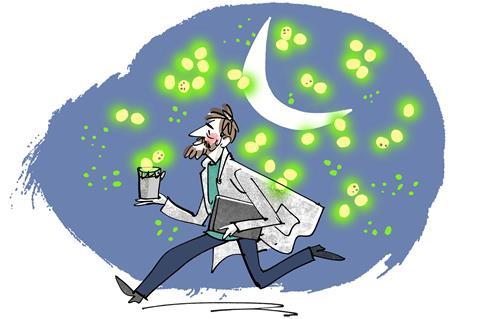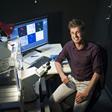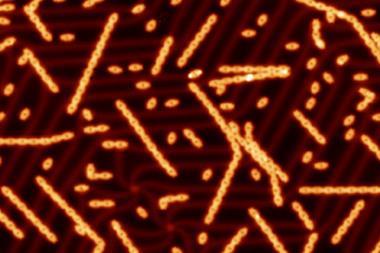Scientific adventures start with the support of an inspirational supervisor

The best leaders create inclusive, supportive environments in which others are able to grow and flourish. Throw in an interdisciplinary problem – in which the scientific questions fall between the usual silos of, say, chemistry and biology – and the tumultuous rollercoaster of postgraduate life, and you need a one-of-a-kind superhero supervisor to lead the team.
Take, for instance, my postgraduate research group that focused on the bioinorganic chemistry of the human malaria parasite. This parasite is responsible for over half a million deaths a year – most of whom are children under the age of five in sub-Saharan Africa – and so it is appropriate that, at the southern tip of Africa, we should be working on this disease that disproportionately affects our continent.
The malaria parasite spends half of its life cycle in the human host, where it mainly resides in our red blood cells. In order to survive and grow, it digests haemoglobin as a source of amino acids. But this process also releases the iron-containing porphyrin molecule called haem, which is toxic. Over millennia, the parasite has evolved an ingenious mechanism to detoxify these poisonous haem molecules by converting them to inert, crystalline pigments called haemozoin.
Many clinical antimalarial drugs inhibit the conversion of haem to haemozoin, thus poisoning the parasite from the inside out. Precisely how the drugs do this remains unclear. Tackling this challenging scientific problem requires an array of laboratory techniques, from detailed spectroscopic studies to cellular fractionation assays – and skilful scientific leadership to weave all of these lines of evidence together, balancing the big picture with a meticulous attention to detail.
During my doctoral studies I synthesised a host of fluorescently-labelled compounds to probe various biochemical processes within the malaria parasite. It soon became evident that it would be valuable to track these compounds in the parasite over its entire life cycle – all 48 hours! My supervisor enthusiastically supported this experiment and was willing to carry the cost of booking the fluorescence microscope for two days straight. What I didn’t tell him was that I was emboldened by his unfailing knack for always seeing the bright side of any experimental result, no matter how unexpected.
I teamed up with an indefatigable colleague who was an expert in culturing malaria parasites and who would guide me through these experiments over the full two days. We booked the microscope over a weekend and cleared our diaries. In the days leading up to the experiment, we double-checked our workflows, ensured that we had sufficient quantities of the necessary reagents, and stocked up on snacks and other essentials to keep us going.
The big weekend arrived and we both came into the lab late on the Friday afternoon, having stockpiled some extra sleep in anticipation of the marathon to come. The major snag was that we had to work across three different buildings on two campuses – every four hours, we had to make up fresh solutions in the chemistry department, drive a few blocks to the pharmacology department where we would harvest the parasites, and then walk to the building that housed the microscope. At first, the novelty of working through the night kept us fresh and energised but, as the early hours of the morning ticked by – 2am, 3am, 4am – we started to lag and did our best to catch snatches of sleep when we could.
The remainder of the weekend passed as a blur as we started running on autopilot for the now-familiar routine of working across three different buildings. But the excitement of watching the parasites grow and develop over their life cycle, the exquisite images provided by confocal microscopy and the mesmerising colours of the fluorescent dyes – reds, greens and blues – carried us through. We encouraged one another, taking turns to be cheerleader – and were sure to back up our precious images every few hours, just in case.
We wrapped up our epic experiment with a high-five on the Sunday evening and retired home to our beds for the first time in over two days. The experiment turned out to be worthwhile for my thesis and led to many excellent discussions with my supervisor – and, of course, stories that earned the envy of our lab mates!
Doing good science sometimes requires personal sacrifices to acquire the crucial data points, but it always needs a great team leader. An excellent postgraduate supervisor supports their students, cultivates confidence and mutual respect, and encourages participation in the broader activities of a life in science, from overseas conference visits to public outreach activities closer to home. All of these elements come together to synthesise the next generation of well-rounded scientists – with memories to last a lifetime, long after the last experiment has been washed up.
Acknowledgment
This article is dedicated to the memory of my PhD supervisor, Timothy Egan (1962–2022)















No comments yet